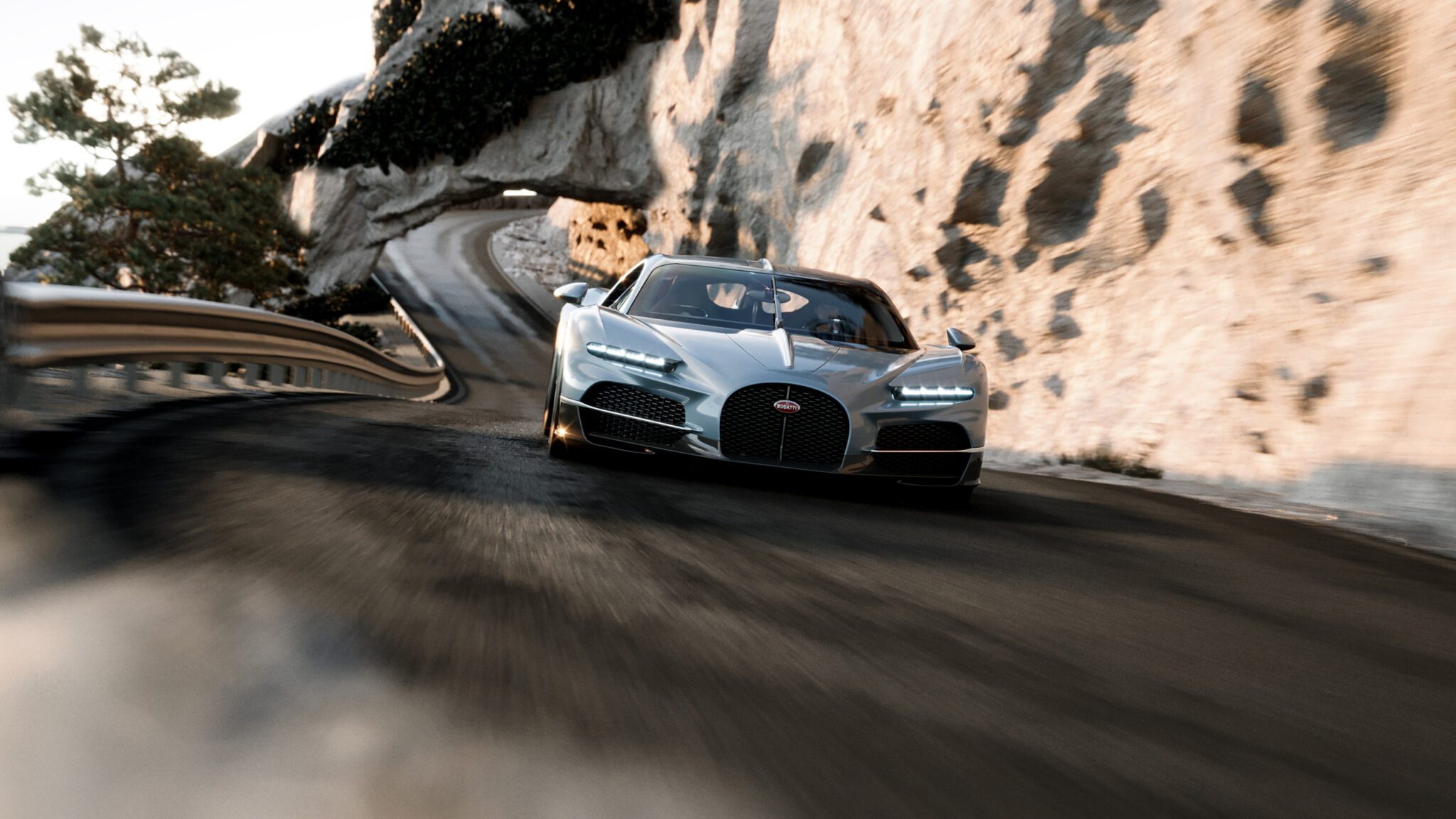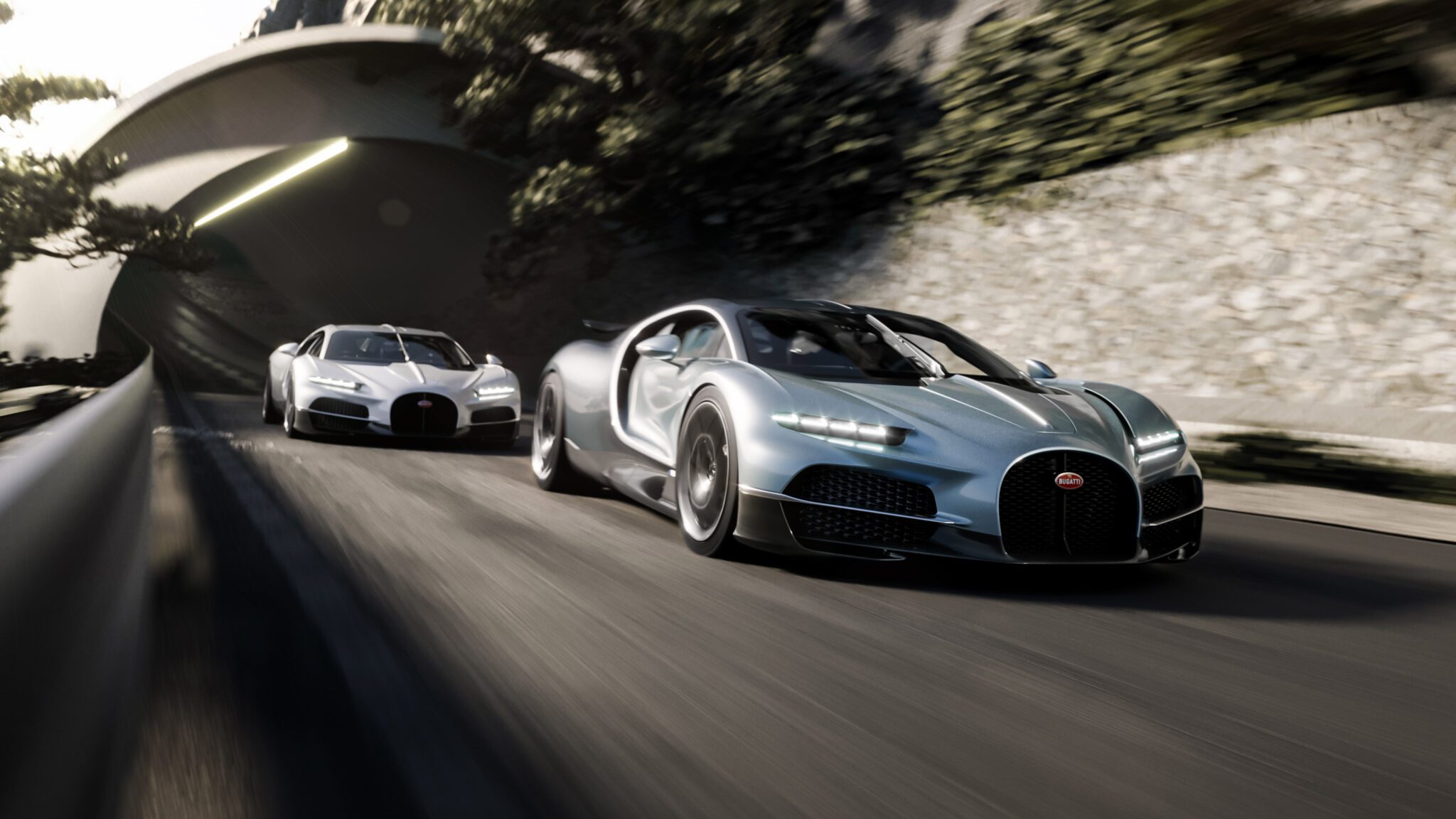When automakers say they’re thinking of the future, it usually involves a roadmap for the next 10 to 15 years. With the Chiron’s replacement, the 1,800-horsepower Tourbillon, Bugatti isn’t looking ahead a few decades but instead to the finely trimmed lawns of the Pebble Beach Concours d’Elegance a century from now.
Bugatti’s obsession with timelessness has been a driving force since the beginning of its third chapter 25 years ago. Despite being a technological powerhouse, essentially refining what it meant for a road car to be “over-engineered,” the Veyron has nearly no components that date it. By abstaining from the early 00s trend of filling cabins with low-res screens powered by cumbersome infotainment systems, interacting with the Veyron is not too dissimilar to the Chiron that succeeded it.
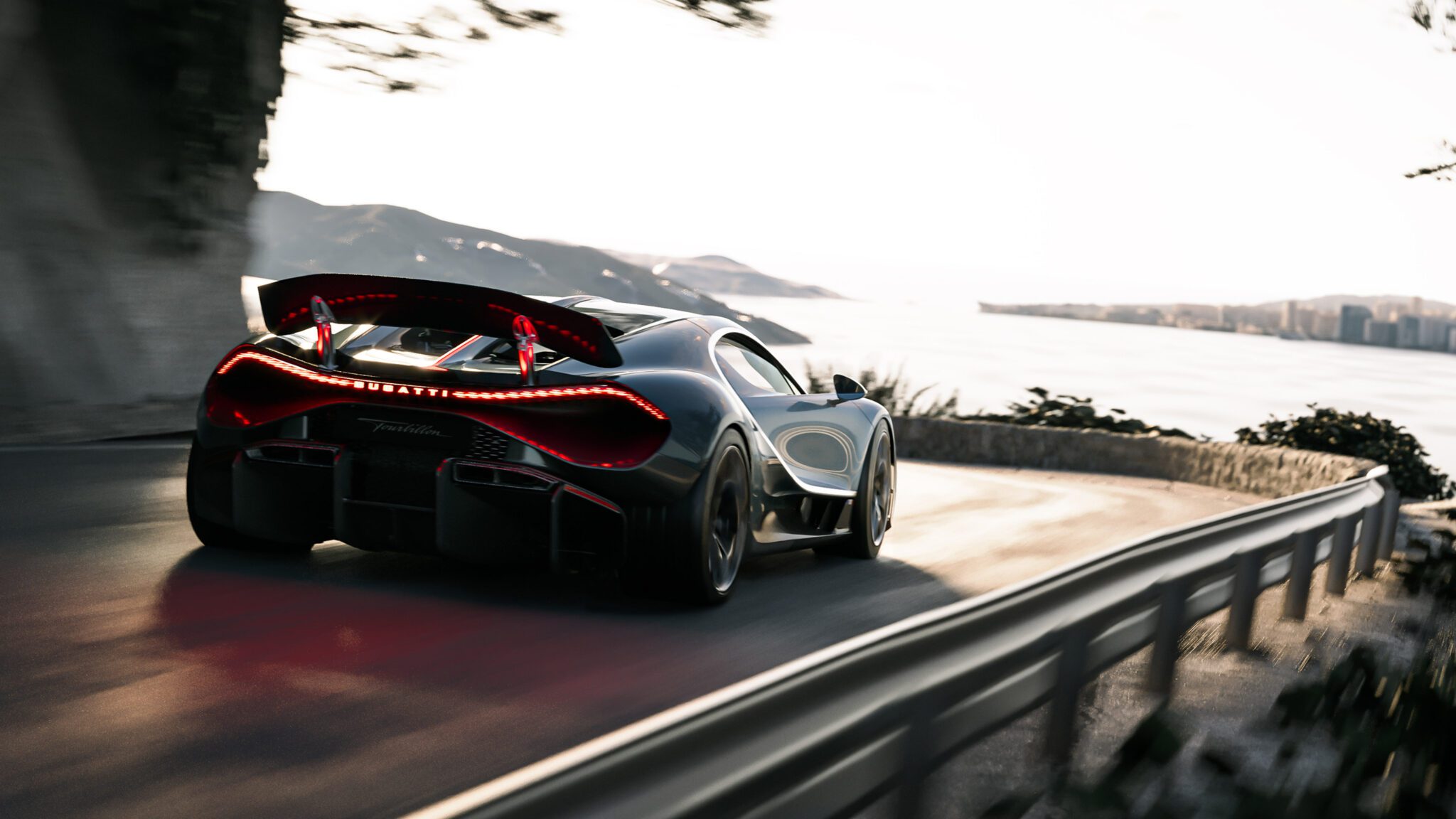
However, with the introduction of the 2025 Bugatti Tourbillon, the French carmaker is focused squarely on this car’s long-term future. Its gauge cluster, for example, is nearly fully analog, sporting a skeletonized construction like you’d get from an AP Royal Oak. Its aero components, such as its raised front fenders, which channel air beneath its headlights, and its retractable rear wing, hide in plain sight until needed. However, its most impressive achievement is integrating a brand-new V16 engine with three electric motors, allowing it to provide naturally aspirated thrills and a genuinely usable electric range.
The Veyron may have introduced over-engineering to the modern scene, but the Tourbillon takes the concept to a new level.
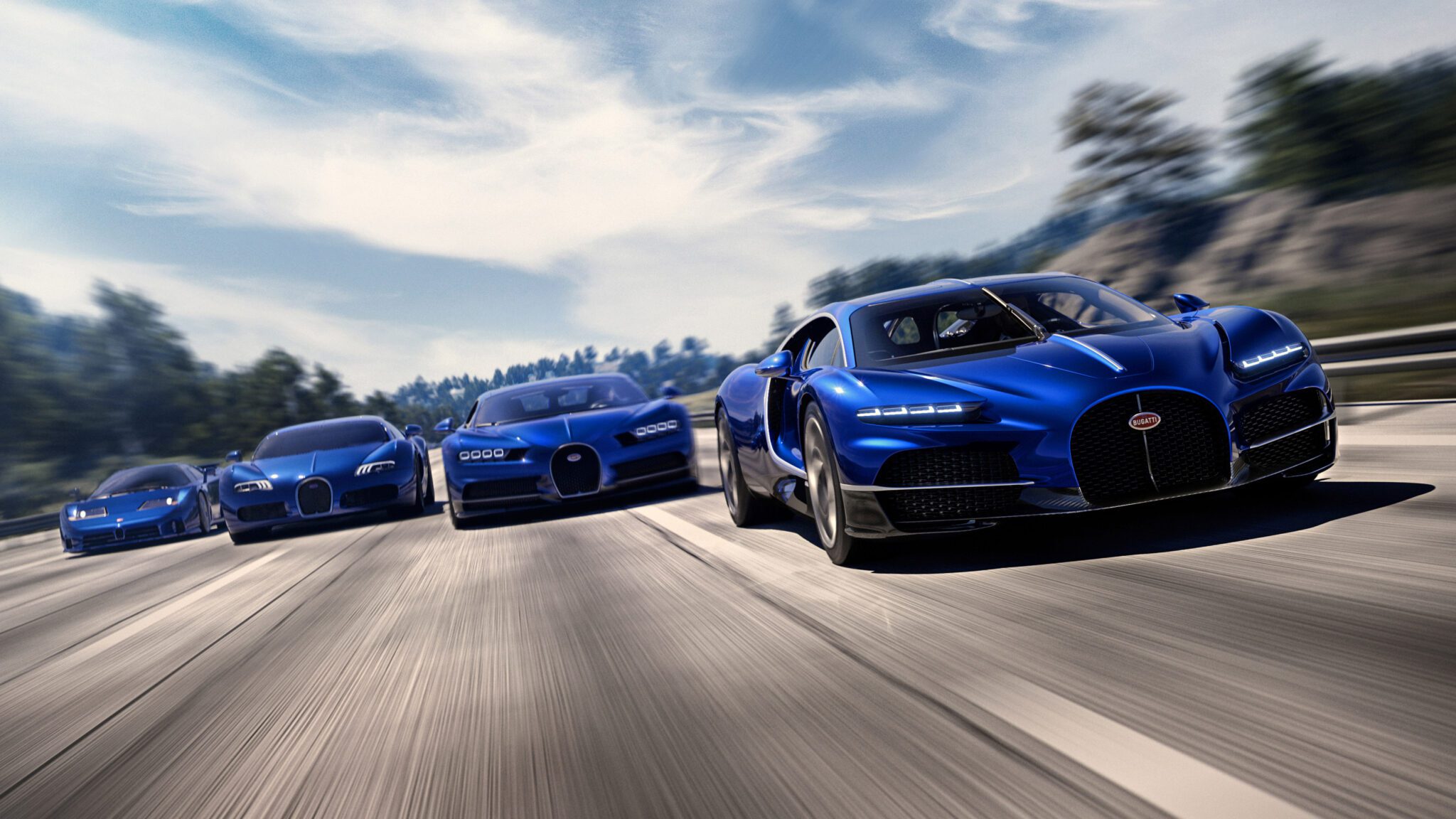
Unlike the Veyron and Chiron, the Tourbillon is not named after a Bugatti racing driver on the count of it no longer housing a W16 engine. Instead, its inspiration comes from the world of watchmaking. In keeping with the carmaker’s French origins, the Tourbillon is a complex movement developed in 1801 by Swiss-French watchmaker Abraham-Louis Breguet. It encases its escapement and balance wheel within a rotating cage to improve balance and maximize accuracy regardless of the watch’s orientation.
This theme of balance is present throughout the Tourbillon’s design, which combines to allow for a top speed of 276 mph. As such, this car’s styling serves that overarching goal. Drawing from the carmaker’s back catalog, including cars like the Type 35 racer, the mythical Type 57 SC Atlantic, and the elegant Type 41 Royale, the Tourbillon now sits lower to the ground, visually widening the car. However, four key elements: its horseshoe grille, central ridge, dual-color split, and the Bugatti line are present, with all lines emerging from its central opening.
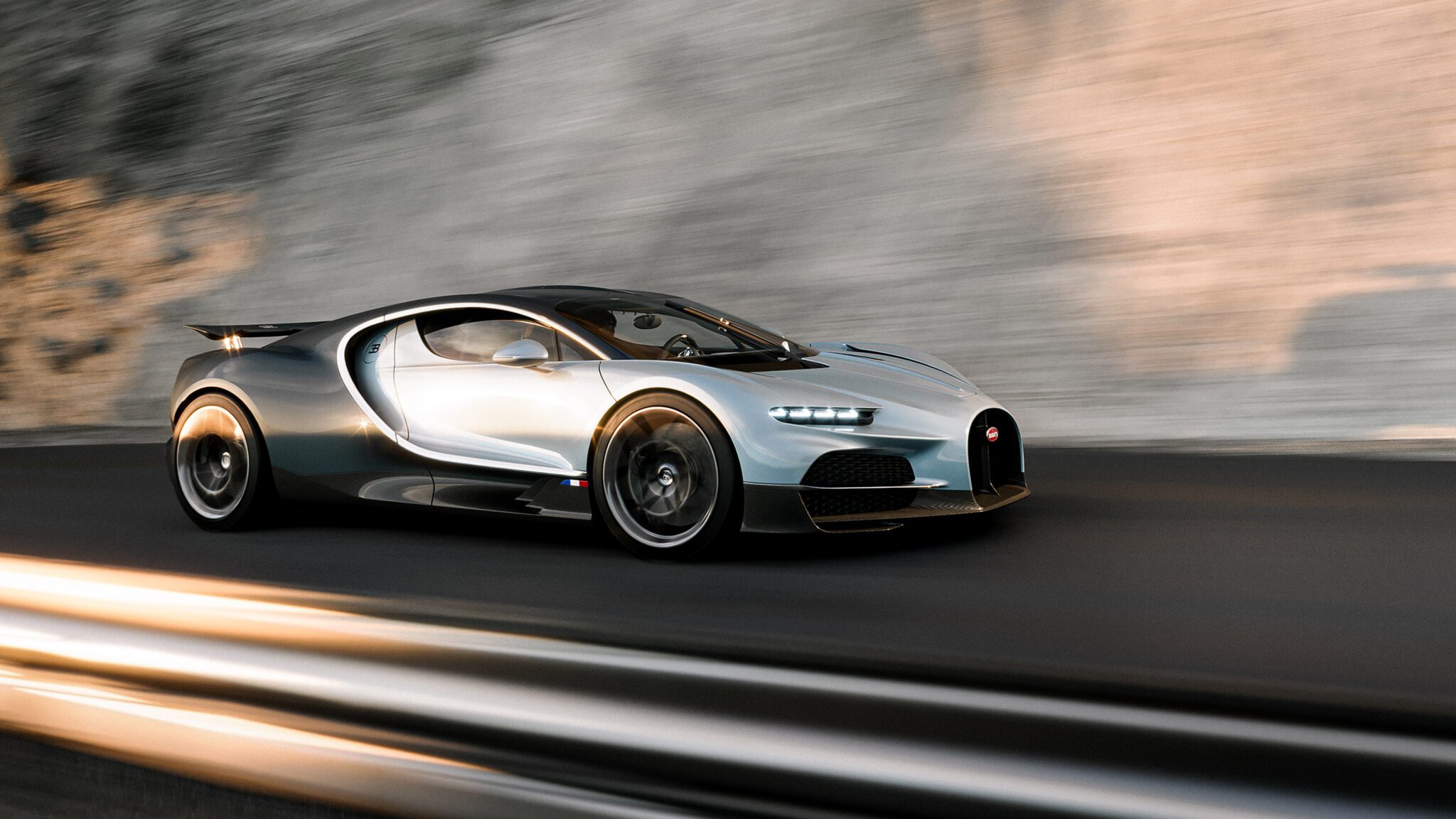
Like the Veyron and its ten radiators, the Bugatti Tourbillon’s aero works to serve the needed air to both its new V16 and its tri-motor setup. To channel air upfront, it sports elevated fenders that route air beneath its headlights and onto its side intakes. A new cooling system allows air to pass under and through its front hood, enabling the use of a more prominent front storage area. Its rear diffuser extends just behind the passenger compartment, sloping upwards aggressively, allowing it to sit hidden beneath the car. Like the Chiron, the Tourbillon counts on a retractable rear wing, which raises for added downforce at lower speeds and doubles as an air brake.
As talk of the Chiron’s successor began circulating online, rumors suggested that the French carmaker might downsize its cylinder count to meet stricter emissions regulations. However, the Bugatti Tourbillon sees the carmaker charging ahead in precisely the opposite direction. As carmakers lean into all-out electrification, the French carmaker unveils a brand-new 8.3-liter naturally aspirated V16 engine co-developed with legendary engineering firm Cosworth.
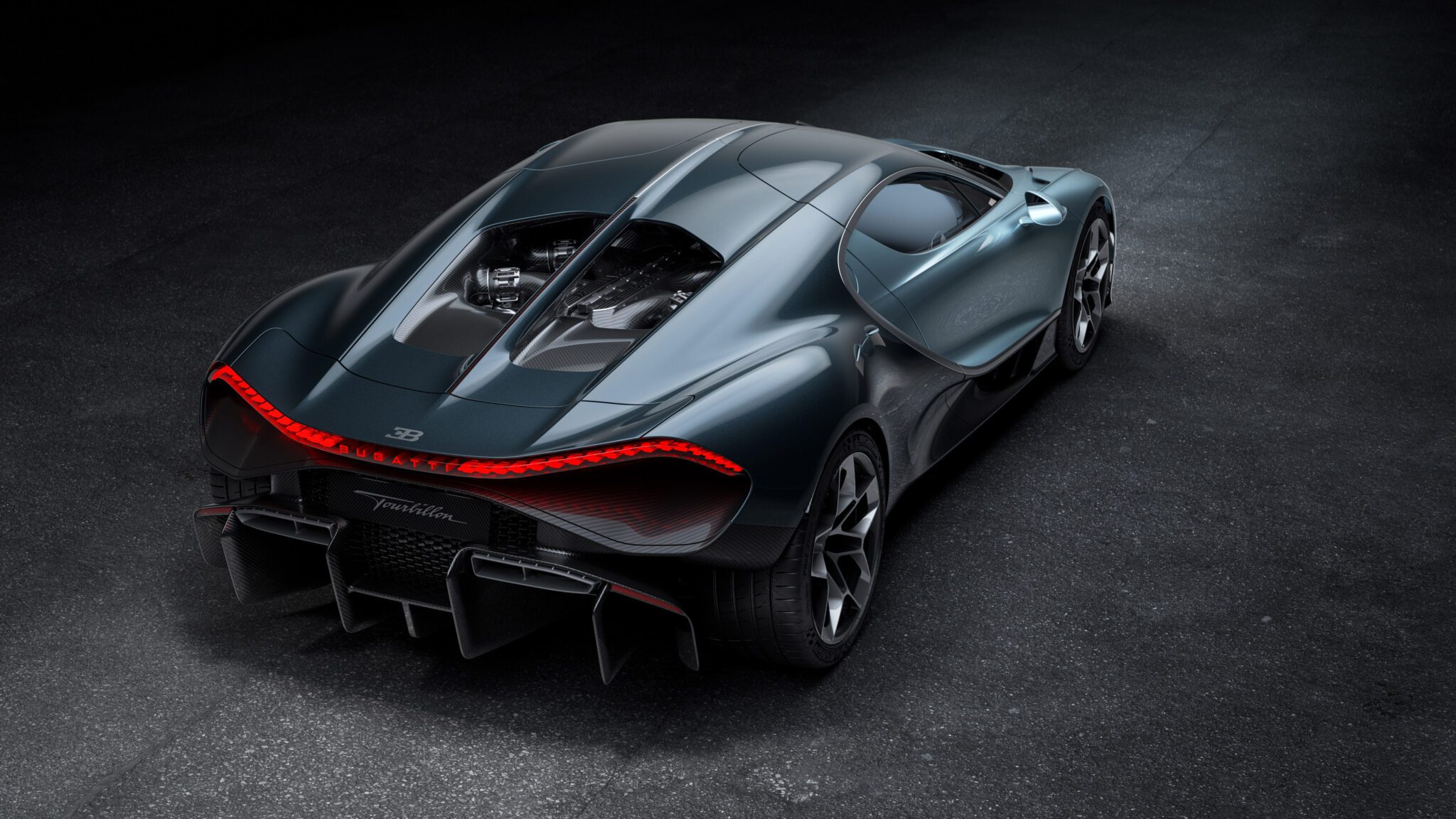
Despite lacking any forced induction, the V16 generates 1,000 hp by itself, just one shy of the Veyron’s quad-turbo W16. It achieves this despite weighing just 555 pounds. However, it’s not alone. Drawing from its sister brand Rimac, the Tourbillon houses three electric motors, two in its front axle and one in the rear. This setup not only develops a further 800 hp, but Bugatti integrated it to sharpen throttle response and fill in torque when necessary, aside from allowing for true torque vectoring and all-wheel traction.
Its total system output is 1,800 hp, and its naturally aspirated engine spins to a screaming 9,000 rpm. While the Tourbillon is still under development, Bugatti claims it’ll sprint to 62 mph in two seconds, reach 124 mph in less than five seconds, and hit its limited top speed of 248 mph in under 25 seconds. However, it activates its Speed Key, and its limit rises to 276 mph. Its new eight-speed dual-clutch transmission and electronic limited-slip differential make these figures possible.
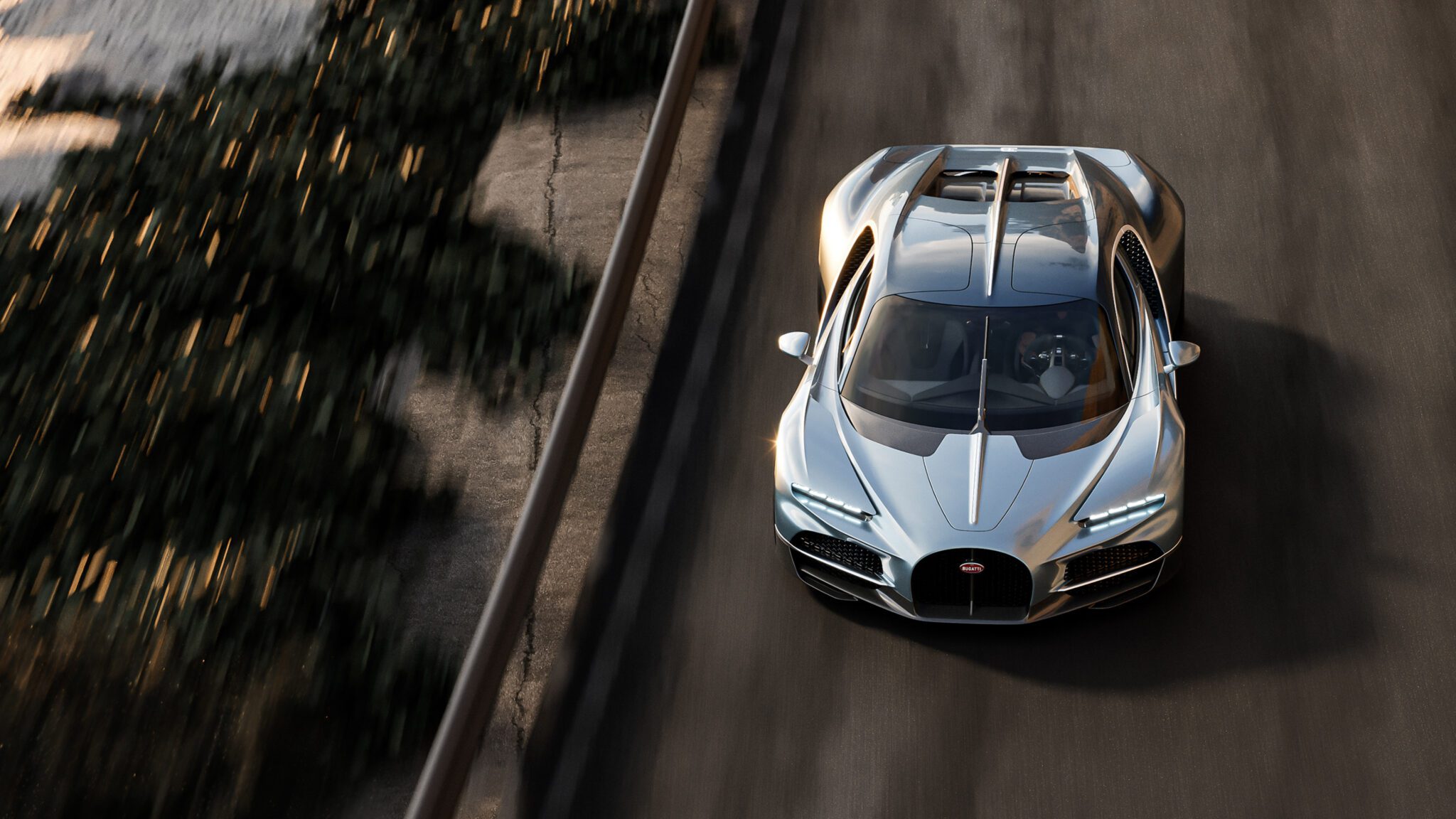
Housed in its central tunnel behind the passengers sits an 800-volt, 25-kilowatt-hour battery pack, allowing the Tourbillon to travel under electric power alone for up to 37 miles. However, despite integrating its new engine, battery pack, and electric motors, Bugatti’s latest is nearly 150-lb lighter than the Chiron that preceded it.
To achieve these weight savings, the Bugatti Tourbillon rides on an entirely new carbon composite chassis and body structure, with its battery working as a structural component. Its front and rear frames are now built of 3D-printed aluminum, which, thanks to a thinner design, is lighter yet stronger than the Chiron’s. This manufacturing approach extends to its multi-link front and rear suspension, which is now 45 percent lighter than its predecessor.
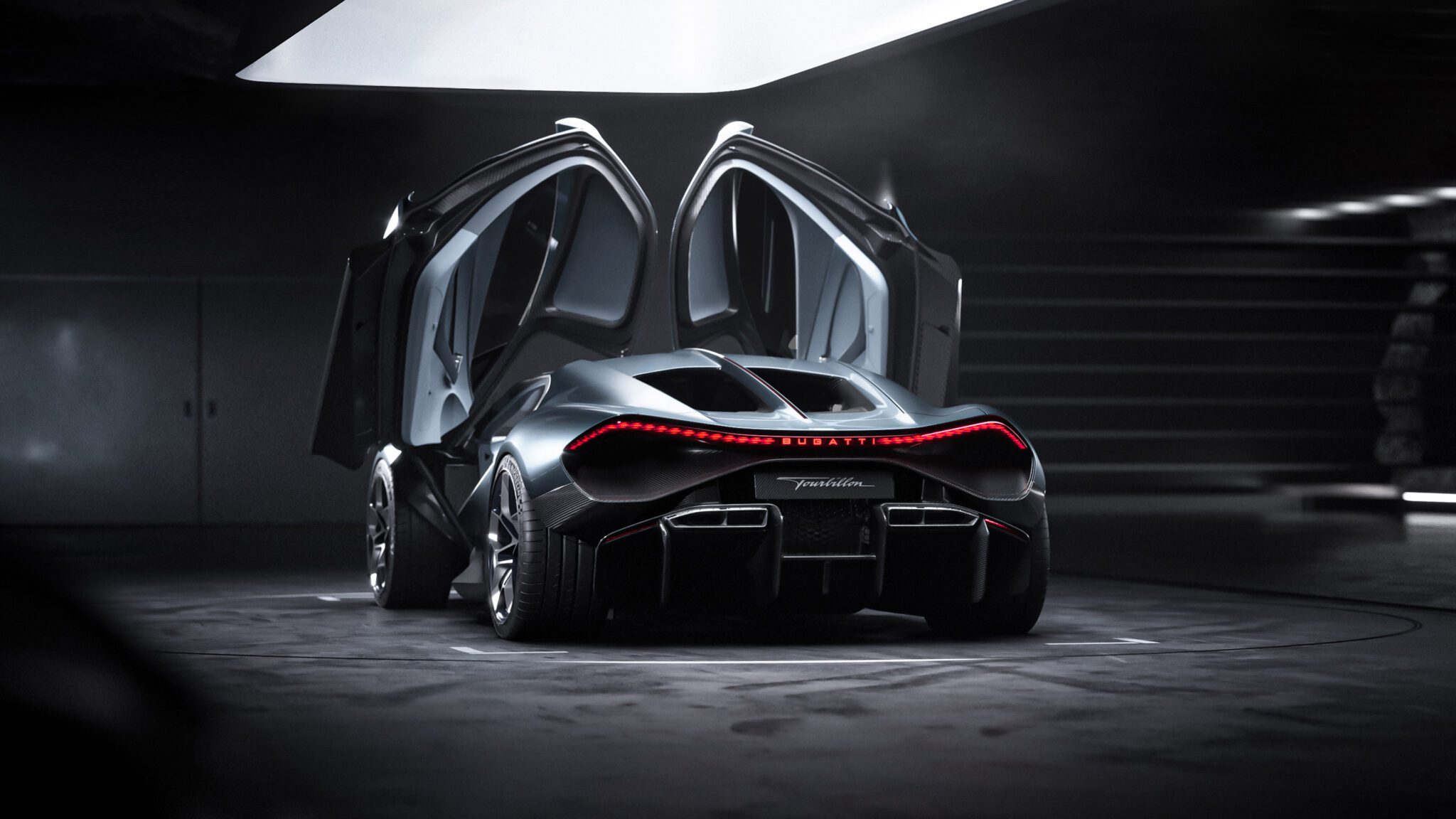
Step inside, and the Tourbillon pairs an elevated level of craftsmanship to balance out its extreme engineering. In keeping with the theme of timelessness, it doesn’t sport any fixed large displays, not even the Chiron’s small screens, which flanked its central tachometer. Instead, Bugatti leaned again into the watchmaking world for its new interior, calling on Swiss watchmakers to develop its skeletonized gauge cluster. Comprised of over 600 components, precious stones decorate the analog dials.
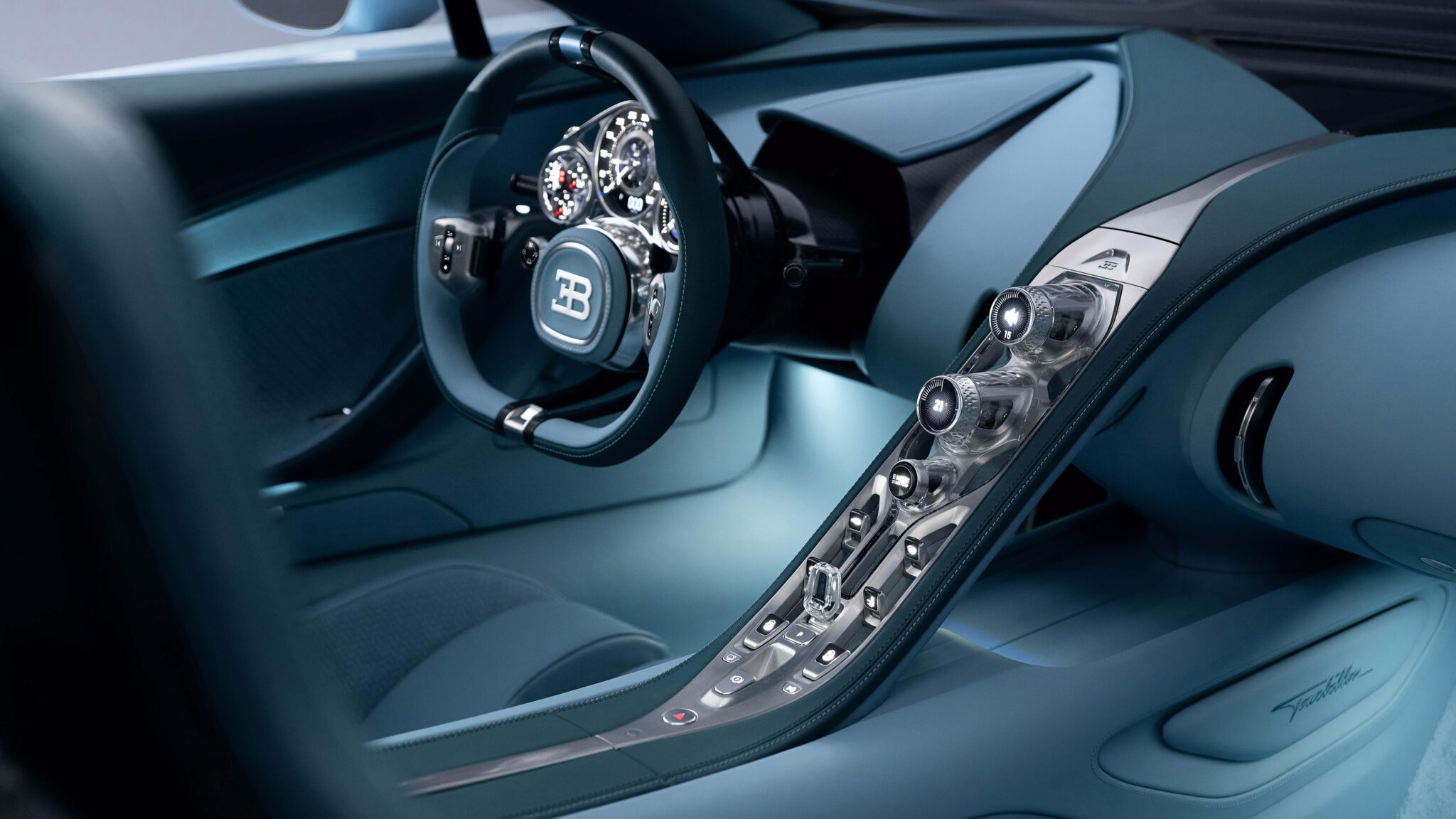
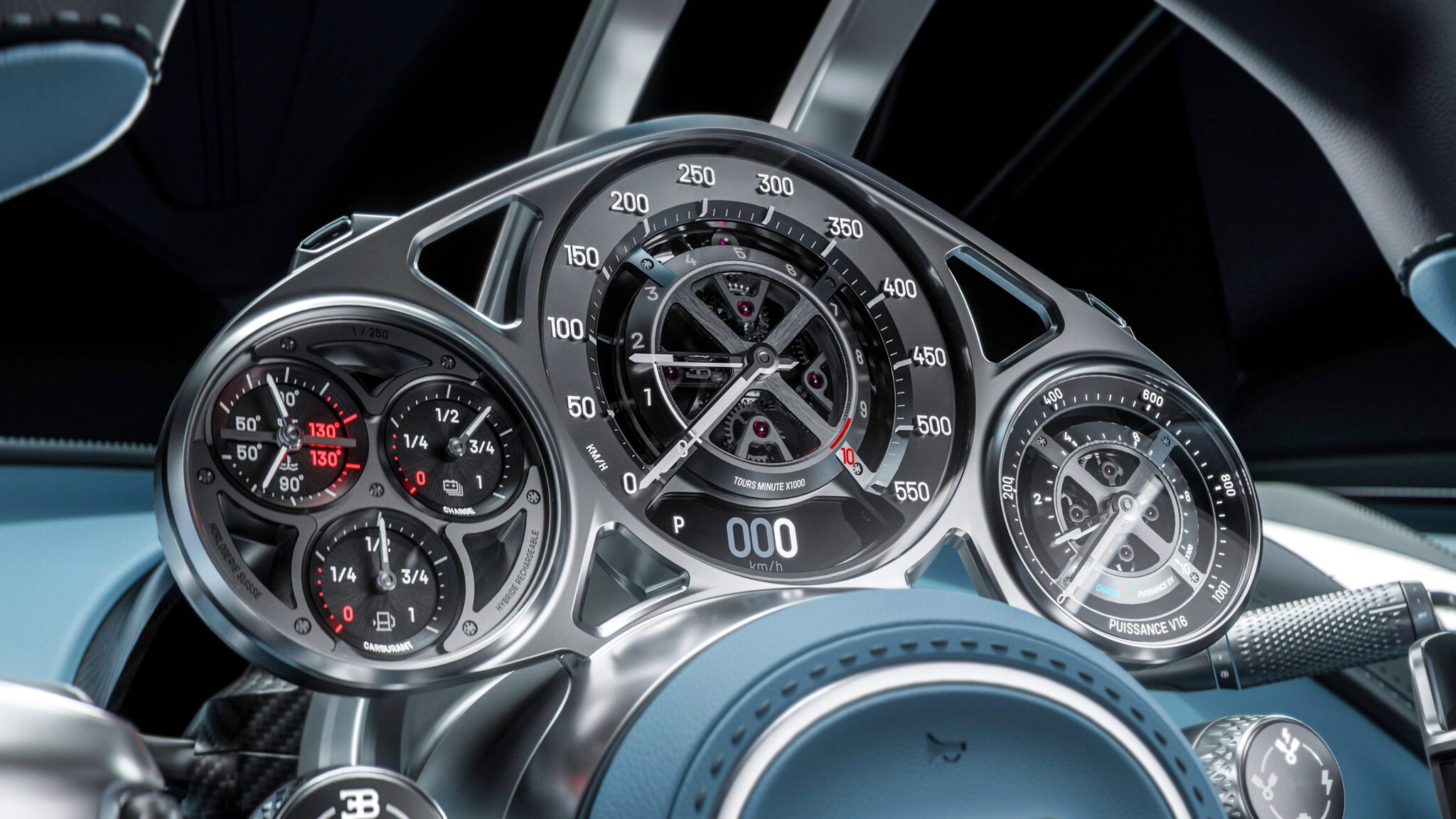
Unlike a more conventional cluster setup, the wheel rotates around the cluster, and the pair moves as one piece. As such, the Tourbillon’s wheel attaches to its hub by just four minuscule spokes aligned vertically. Its center console houses plenty of anodized and milled aluminum pieces but adds new crystal glass components and a cluster of knurled aluminum switches. Curiously, its drive mode selector stans up vertically, not too dissimilar to what we’ve recently seen in other VW Group products like the Porsche 911.
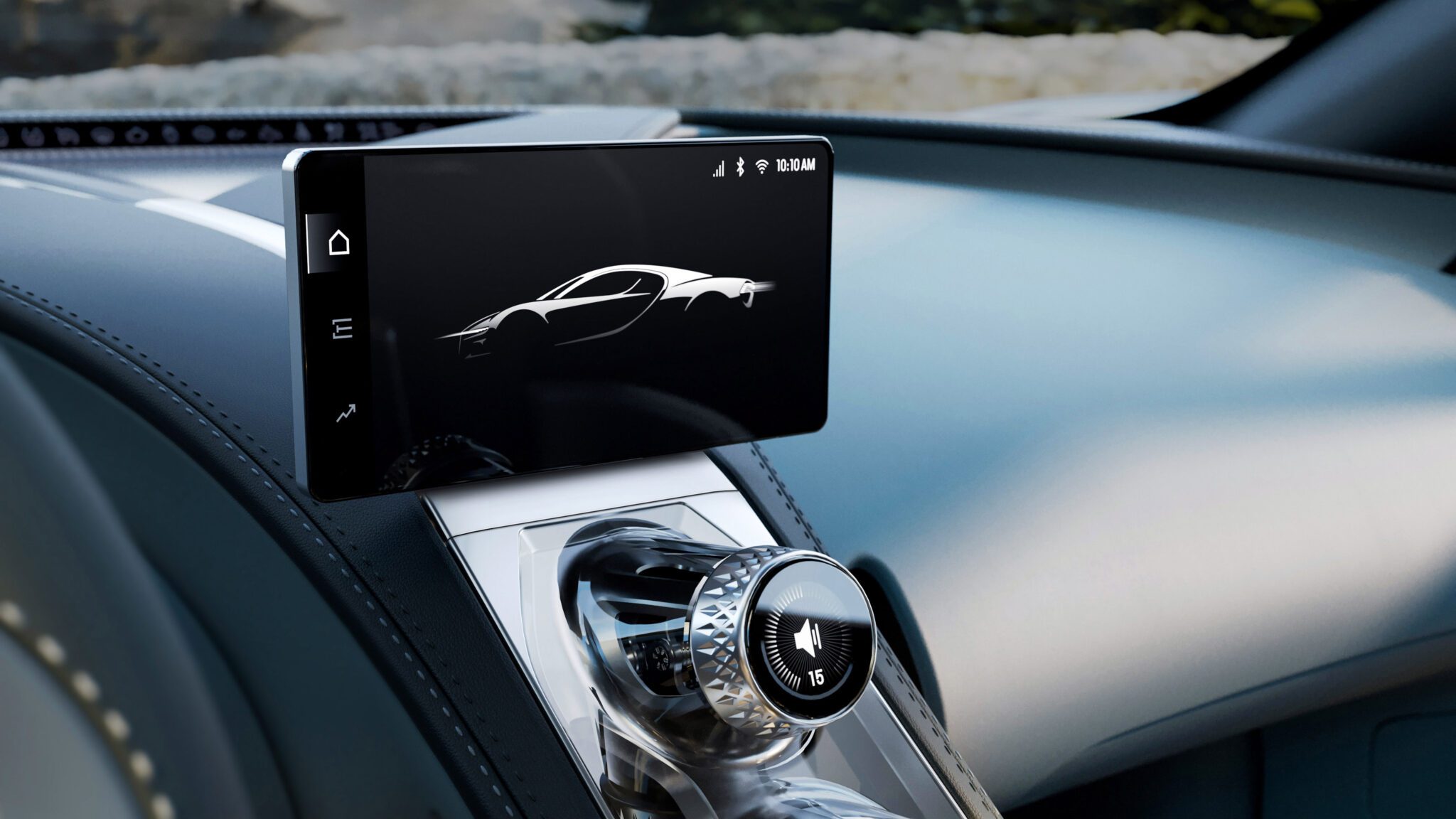
While Bugatti has previously been adamant about its dislike for large displays, the Tourbillon bends the rules slightly by incorporating a new retractable screen built to offer Apple CarPlay connectivity. Visible in landscape and portrait modes, it extends fully in just five seconds and hides when it’s not needed.
As the French carmaker pulls the covers off its latest offering, the Bugatti Tourbillon is still in the testing phase of its development, with prototypes covering miles worldwide. Unlike the Chiron, its successor’s production run shrinks to just 250 units with a starting price of over $4 million. Its assembly is expected to begin once the brand completes its run of W16 models, with deliveries commencing sometime in 2026.
